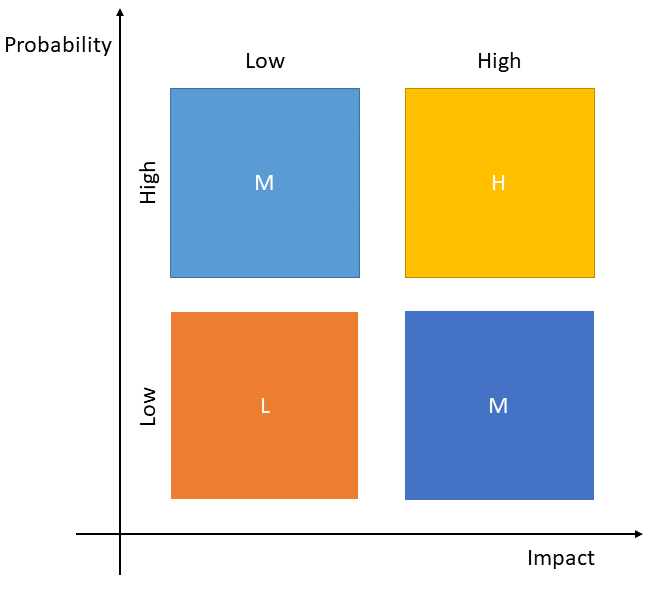Here we have arrived at the Planning phase, that is, the planning of the project itself. The planning is composed of 3 elements
- Schedule
- Budget
- Risk Management Plan
So let’s start with the first step of planning.
Schedule
Kick-off
A meeting of no more than an hour with Team Members and various stakeholders aims to align everyone and ensure that the vision and goal of the project is clear to everyone. Everyone must be on the same frequency, there must be no doubts.
Milestones
They are important events of the project. They serve to keep track of progress, they are turning points that once reached allow you to do a retrospective and understand how the project itself is proceeding.
Tasks
They are the smallest block.
Generally, according to the WBS (Work Breakdown Structure) model, a project is composed of different Milestones each composed of several tasks. Being able to deconstruct the project into smaller blocks facilitates progress and management, it becomes easier to understand which tasks can be done in parallel, which in series, and what is more, important and what is more urgent.
All these aspects must be included in the Project plan, which will therefore include:
- Project Schedule
- Milestones
- Task
- People
- Documentation
- RACI chart
- Budget
- Project Charter
So let’s take a look at the schedule and time estimation.
Time Estimation
To be precise, which is essential in planning, it is necessary to correctly define the terms because they make us pay attention to certain aspects. In this calculation it is essential to ask the team for help with estimates, technical competence in the estimate can improve accuracy.
- Effort Estimation: this is the estimate of the time required to complete a task. In simple terms, it is actively working time.
- Time Estimation: an estimate of the time required to complete the task, including ancillary activities, for example, waiting times, necessary permits, etc. At a minimum, it coincides with effort estimation.
- Buffer: additional time to be estimated to prevent external/internal events from affecting the time estimation.
- Capacity: capacity of the team’s resources.
Project Budget
This part should have already been estimated in the Initiation phase, it becomes crucial in planning to manage the progress of the project itself.
Costs
- Direct
- Wages
- Materials
- Equipment
- Training
- Indirect
- Bills
- Administrative costs
- Insurance
- Security
- …
Tips!
- Divide the budget for each Milestone
- Refer to historical data
- Use case studies, colleagues, mentors
- Schedule when money will come in and when it will go out
- Check again and again!
- Buffer: at least 5% more than expected
Basic concepts
- Cash flow: the flow of income and expenses
- CAPEX: Capital Expenses are long-term expenses, real estate, and equipment, they are company assets
- OPEX: Operating Expenses are short-term expenses, rents, bills, and payrolls. Generally, they are recurring expenses
- Contingency Reserve: costs arising from KNOWN RISKS, arising from Risk Assessment
- Management Reserve: costs arising from UNKNOWN RISKS. A buffer of 5-10%
Risk Management
In general, a risk matrix is created to understand what could happen, what impact it could have, and with what probability.
Risks can be of different types: Time, Scope, and Budget.
As previously mentioned, it is necessary to understand the probability of the event and its impact. Depending on where the event is inserted, we will have a high, low, or medium risk.

How are risks managed? There are several ways to manage risk appropriately,
- Avoid: there are risks that can be avoided by changing something, making small different choices.
- Minimize: reduce the impact of risk
- Transfer: transfer the risk to someone else so that it no longer falls on the structure
- Accept: if nothing else can be done, accept the risk with its probability and impact
So let’s summarize the Risk Management work in this series of steps:
- Identification of risks
- Analysis, I build the Risk Matrix
- Evaluation of priorities
- Risk treatment with the methods mentioned above
Communication Plan
During the planning phase, the communication plan is also managed. In this section, some aspects must be defined:
- To whom should I communicate? Stakeholders – Team
- How? Which means and with what tone to speak
- When? At each milestone with stakeholders and periodically with the team
- Why? I may need to make special communications in case of problems or significant changes
- What do you want to say? What kind of communication is it, work progress, future tasks, other…
Once the planning is finished, we start with the execution!


Comments